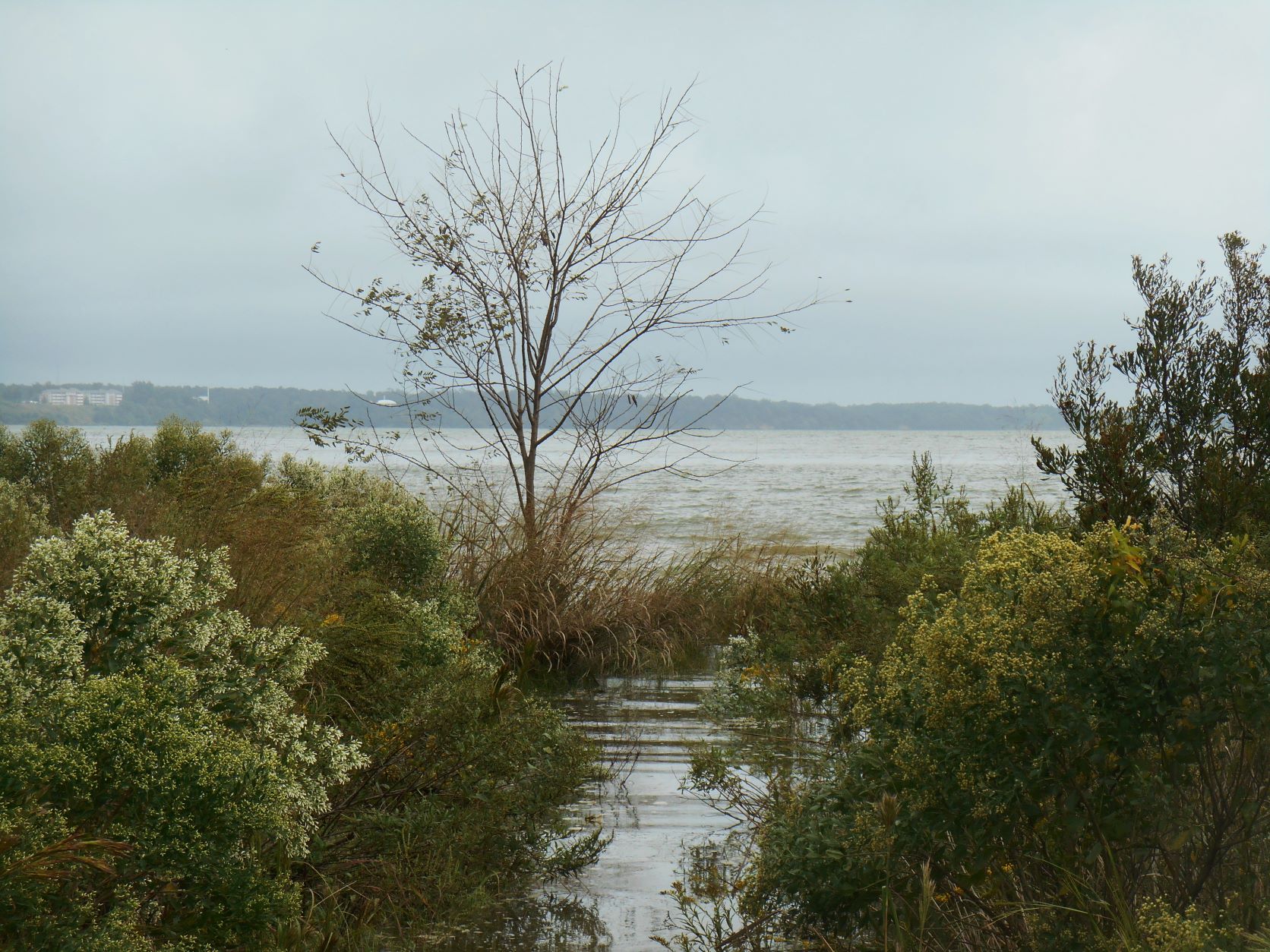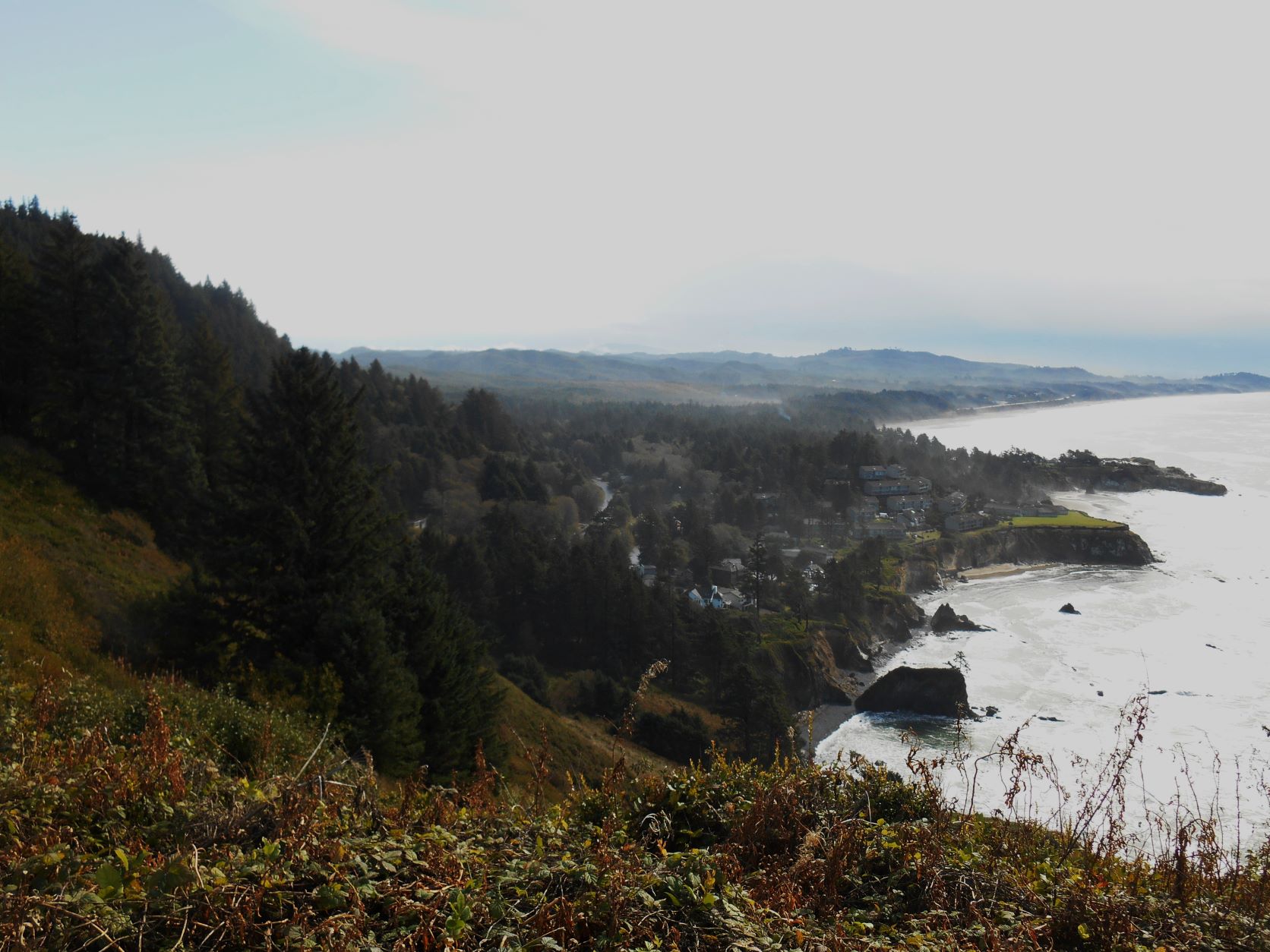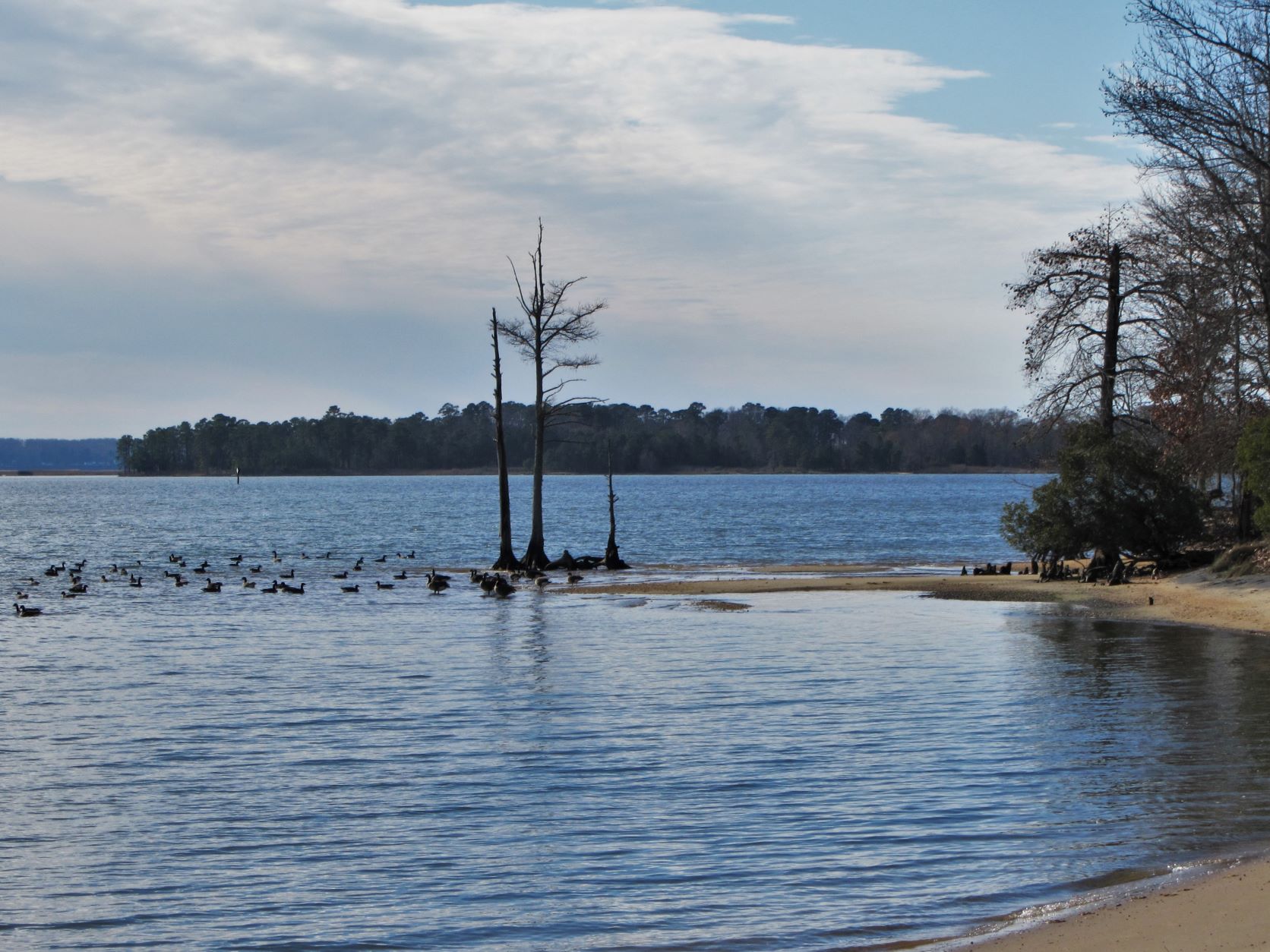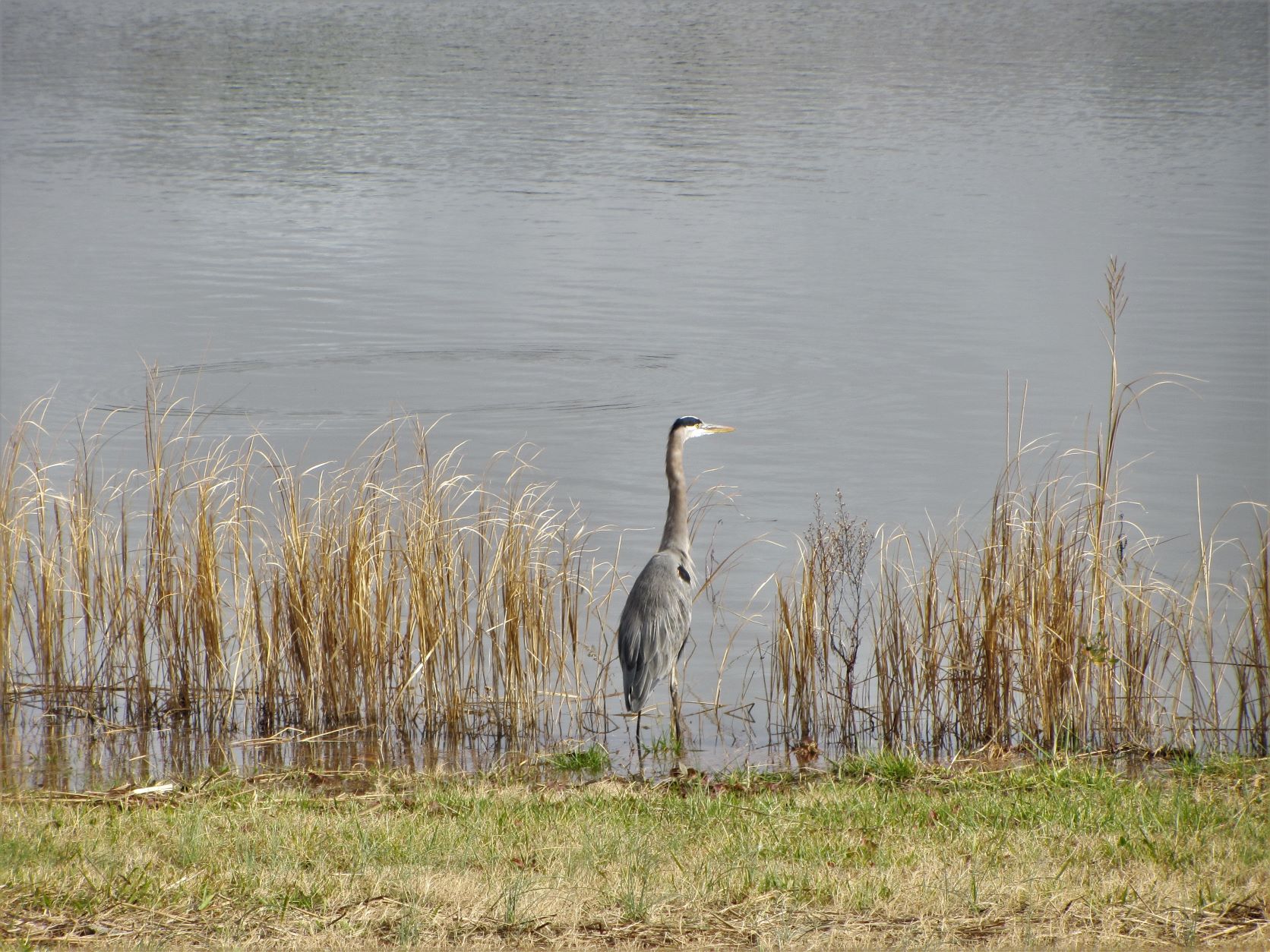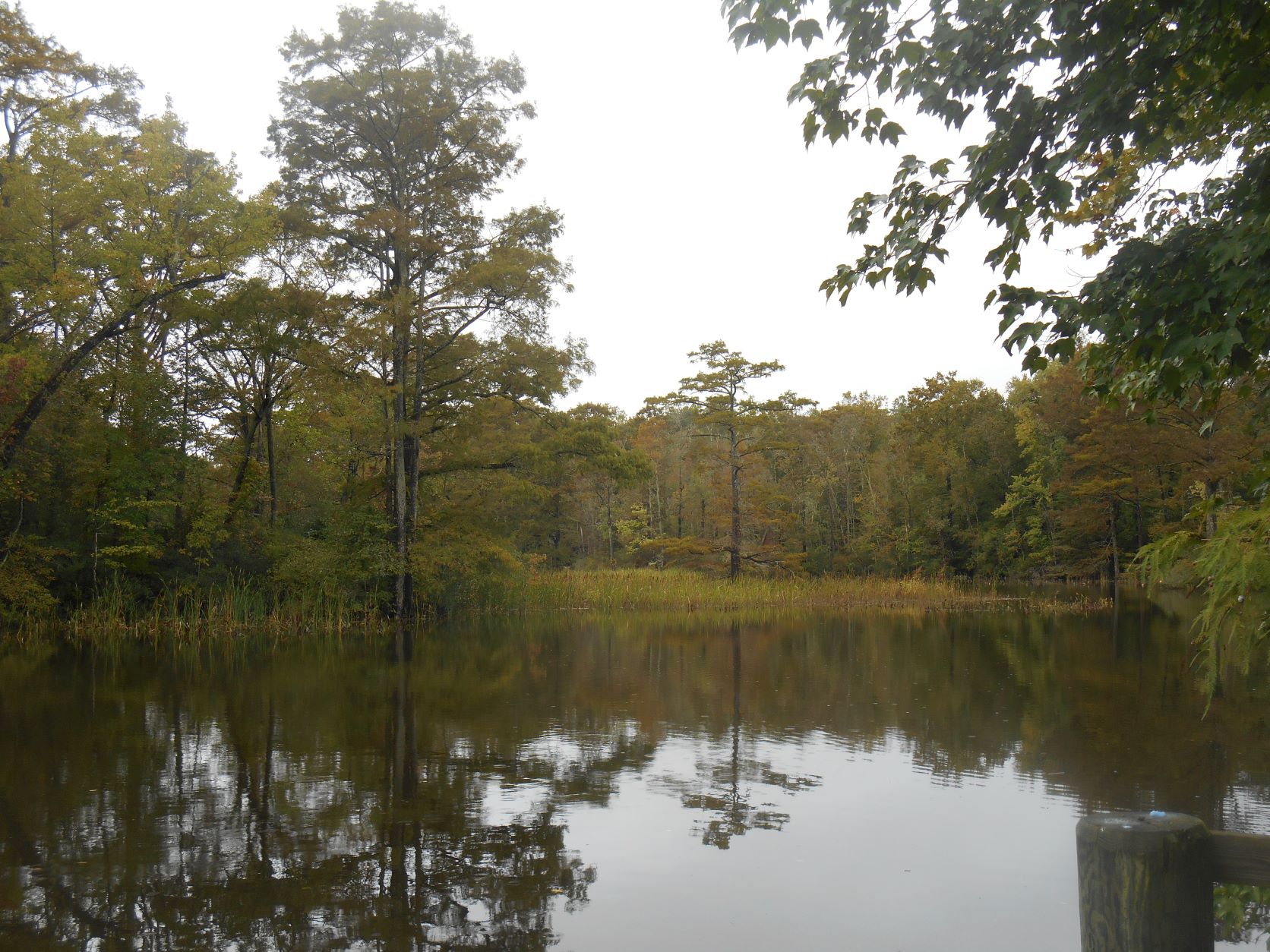Planting Trees and Other Hacks to Manage Wet Soils
Water may be a blessing or a curse. Gardeners usually want abundant rain to nurture their plantings and generally have a back-up irrigation plan for dry spells. Providing the right amount of water for each plant is one of the keys to a gardener’s success.
Working With the Water Cycle
Just as leaves absorb carbon from the air, so roots absorb water from the soil. The water, and any chemicals or elements dissolved in it, may be stored in the body of the plant, used in its metabolism, or released into the atmosphere as oxygen and water vapor. Plants recycle rainwater back into the atmosphere to form clouds. This is known as the ‘Water Cycle.’
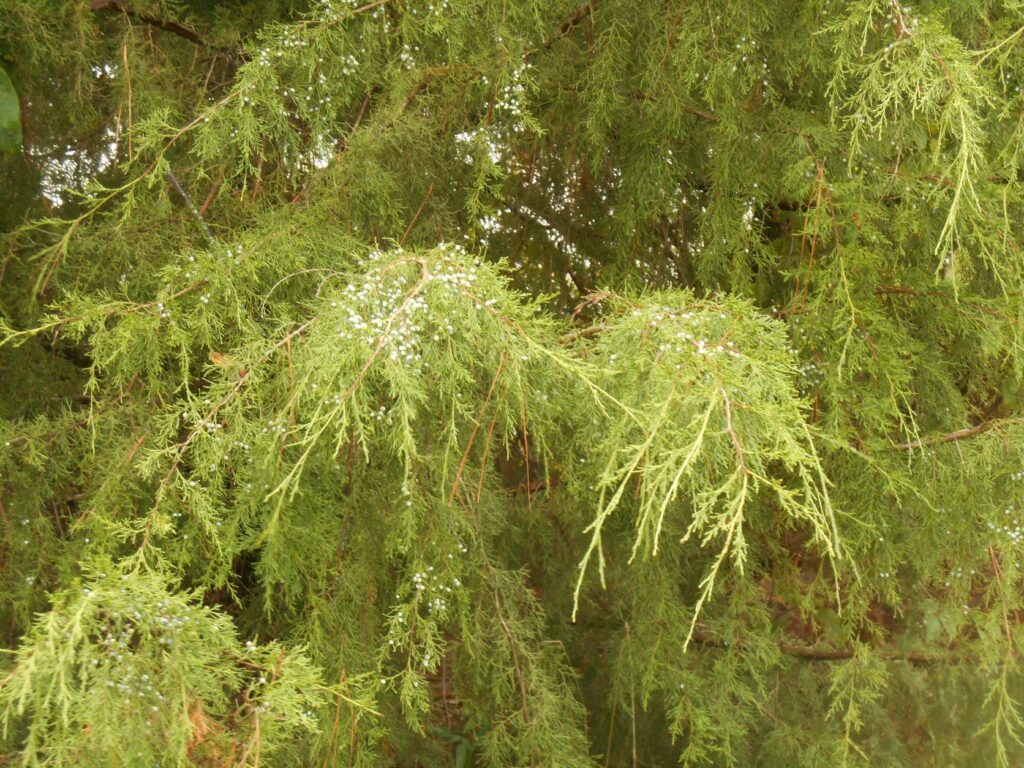
Evergreen trees continue to absorb water and release it back into the atmosphere throughout the year. Juniperus virginiana
If you have visited the Blue Ridge or Allegheny Mountains, you may have noticed the mist and low clouds hanging over these heavily wooded, ancient mountains. The mist is water vapor released from the dense vegetation growing on the mountains and in the valleys. Younger, rockier mountains, that don’t support dense forests, don’t have this hazy mist to make them appear ‘blue’ from a distance.
Water, which contains oxygen, is also necessary for each plant to create cellulose and other plant tissues. Plants grow faster when water is consistently available. Pollutants dissolved in water can be trapped in the cellulose, which helps sequester pollutants from the environment just as plant growth also sequesters carbon from the air. This is a ‘win-win’ for the plant and for our environment.
Too Much Rain?
But what happens when it rains too much? What happens when flooding rains inundate our yards and leave the soil soggy for days or weeks at a time? Some plants can adapt, but others begin a slow decline when their roots can’t ‘breathe’ from air pockets in the soil. You may notice that grass won’t grow well in low, wet spots in your yard.
Have you ever noticed the woody ‘knees’ of a bald cypress tree? Many botanists believe that bald cypress trees, growing in standing water, may grow these specialized roots that stand above the usual level of the water to allow the tree’s roots to breathe. They may be a sort of ‘snorkel’ to help the tree survive in swamps and beside rivers.
Roots need oxygen from the surrounding air pockets in soil, just as leaves ‘breathe’ in and out through their stomata. When roots begin to ‘drown’ in too much water, they die and begin to decay. Various microbial diseases can develop that further damage the roots and soon the entire plant will begin to die. We call this ‘root rot.’ When roots are under stress from too much water, they no longer function to bring water to the rest of the plant.
You may have noticed trees in our area dying in recent years. While there are several different pests and tree diseases responsible, some trees are dying because the soil where they grow is soggy from too much rain and from rising water tables. When you notice water standing for days and days in ditches, fields and yards, you know that storm water isn’t able to drain away. In some low-lying areas the water table is rising, which means the soil remains saturated in areas where roots need to grow.
The Soil Makes a Difference
Heavy clay soil makes it hard for water to drain away because it is so dense. There is little room for water to move between the small particles of clay soil. There is a lot of clay soil in our area, especially in newer neighborhood where developers removed good topsoil during construction. Soil with a high content of humus, or organic matter, drains faster than clay, but also holds moisture like a sponge with air pockets, so plants can use the moisture over a long period. Sandy soil drains the fastest of all soil types. Gardeners add organic matter, like compost, to nearly all soil types to improve both drainage and fertility. Adding compost to new planting areas to improve soil texture helps plants grow better and faster.
When heavy rain falls for days during storms, at any time of year, soils can get waterlogged and plantings can suffer. This can cause more problems during the fall and winter when many trees are bare. Without leaves, a tree’s vascular system draws water from the surrounding soil up through the tree more slowly. Lenticels in a tree’s bark still release water vapor and oxygen into the atmosphere, even during the winter. But less water is moved out of the soil, and into the atmosphere, during the winter when deciduous trees are without leaves. When the tree’s metabolism has slowed, the roots are even more at risk of ‘drowning’ in overly saturated soil.
Possible Solutions
Ideally, plants can be planted on berms, or on sloping ground to improve drainage. Holding ponds, rain gardens, and French drains can be excavated to allow the surrounding land to drain. This water is valuable, so finding ways to keep stormwater on site, so it can slowly permeate the soil into the water table below is preferable to having it drain away quickly. Finding ways to capture stormwater run-off into holding tanks, like rain barrels, also helps retain the water for later use in irrigation.
Flowing water picks up and washes away soil particles, along with any fertilizers, pesticides, or petroleum products in its path. This can cause erosion to any unprotected soil. It can also carry fertilizers and pollutants into our creeks, rivers, and ponds. These fertilizers and pesticides harm the life and the ecological balance of our wetlands.
Rain gardens, built to hold water draining from other parts of the yard in an area where it can slowly seep into the ground, help to manage storm water. Rain gardens depend not only on an excavated area to hold water, but also on plants that can tolerate some flooding and thrive in moist soil. Eroded soil and pollutants settle out, rather than flowing into surrounding wetlands. James City County’s office of Stormwater and Resource Protection offers a range of resources to homeowners, including grants and support for creating rain gardens.
Using Trees to Manage Saturated Soils
If soggy soil and standing water are problems in your yard, consider planting trees and shrubs that like wet soil, and that can tolerate periods of standing water, to help manage the problem. Whether you are replacing failing plants that can’t tolerate soggy soil, or you are proactively addressing a problem area, consider these trees beautiful solutions to add value to your property. Many of these trees will help to manage the wet spots by actively absorbing standing water, using some part of it for growth, and then releasing the rest as water vapor.
This is not an exhaustive list, but it is a start. Most, but not all of these trees are native to coastal Virginia. Follow the links to learn more about each plant, view photos, and decide whether it will thrive in your yard. It is important to plant the right plant in the right place for its long term success.
Notice the amount of light available for new plantings, and whether the spot is bright in the morning or afternoon. It is also helpful to test the soil to determine its Ph, or how acidic or sweet the soil may be. (Master Gardeners with the Turf Love program can help you determine the Ph of your soil, and discuss wet areas on your property.) Some trees will thrive in any amount of light and in either acidic, neutral or sweet soil. Others have more specific needs to thrive. Choose plants that are most likely to thrive in the area where you need them.
If you are designing a rain garden, supplement these woody plants with a variety of moisture loving herbaceous perennials, including ground covers and ferns. Providing a selection of host and nectar plants can turn your problem area into a thriving wildlife habitat for a wide variety of creatures.
Trees For Wet Areas and Rain Gardens
Full to Part Sun
Acidic to Neutral Soil
Red maple Acer rubrum
Sugar maple Acer saccharinum
Hazel alder Alnus serrulata
River Birch Betula nigra
Swamp Hickory Carya aquatica
Buttonbush Cephalanthus occidentalis
Golden Hinoke Cypress Chamaecyparis obtusa ‘Crippsii’
Pagoda Dogwood Cornus alternifolia
Witchhazel Hamamelis virginiana, H. vernalis
Inkberry holly Ilex glabra evergreen
Virginia red cedar Juniperus virginiana evergreen
American Sweetgum Liquidambar styraciflua
Sweet Bay Magnolia virginiana
Southern Bayberry Myrica cerifera evergreen, Swamp Bayberry, M. caroliniensis
Black Gum Nyssa sylvatica
Loblolly Pine Pinus taeda evergreen
American Sycamore Platanus occidentalis
Swamp Post oak Quercus lyrata
Swamp Chestnut Oak Q. michauxii
Bald cypress Taxodium distichum
Southern Highbush Blueberry Vaccinium formosum, Early Blueberry V. fuscatum
Neutral to Sweet Soil
Redstem dogwood Cornus sericea
Crape Myrtle Lagerstroemia indica
Swamp Bay Persea palustris evergreen
Willow Salix species
Part Sun to Shade
Acidic to Neutral Soil
Swamp Azalea Rhododendron viscosum
Neutral to Sweet Soil
Spicebush Lindera benzoin
Scarlet Buckeye Aesculus hippocastanum
Full Sun to Shade
Hawthorn Crataegus marshallii
Winterberry holly Ilex verticillata
Yaupon holly Ilex vomitoria evergreen
For More Information
Darke, Rick and Douglas Tallamy. The Living Landscape: Designing for Beauty and Biodiversity in the Home Garden. 2014.
Dirr, Michael A. Dirr’s Encyclopedia of Trees and Shrubs. 2016.
Lambe, Dan. Now Is the Time for Trees: Make an Impact by Planting the Earth’s Most Valuable Resource. 2022.
Tallamy, Douglas. Bringing Nature Home: How Native Plants Sustain Wildlife in Our Gardens. 2007.
All photos by Elizabeth McCoy
Elizabeth McCoy is a JCCW Master Gardener Tree Steward

